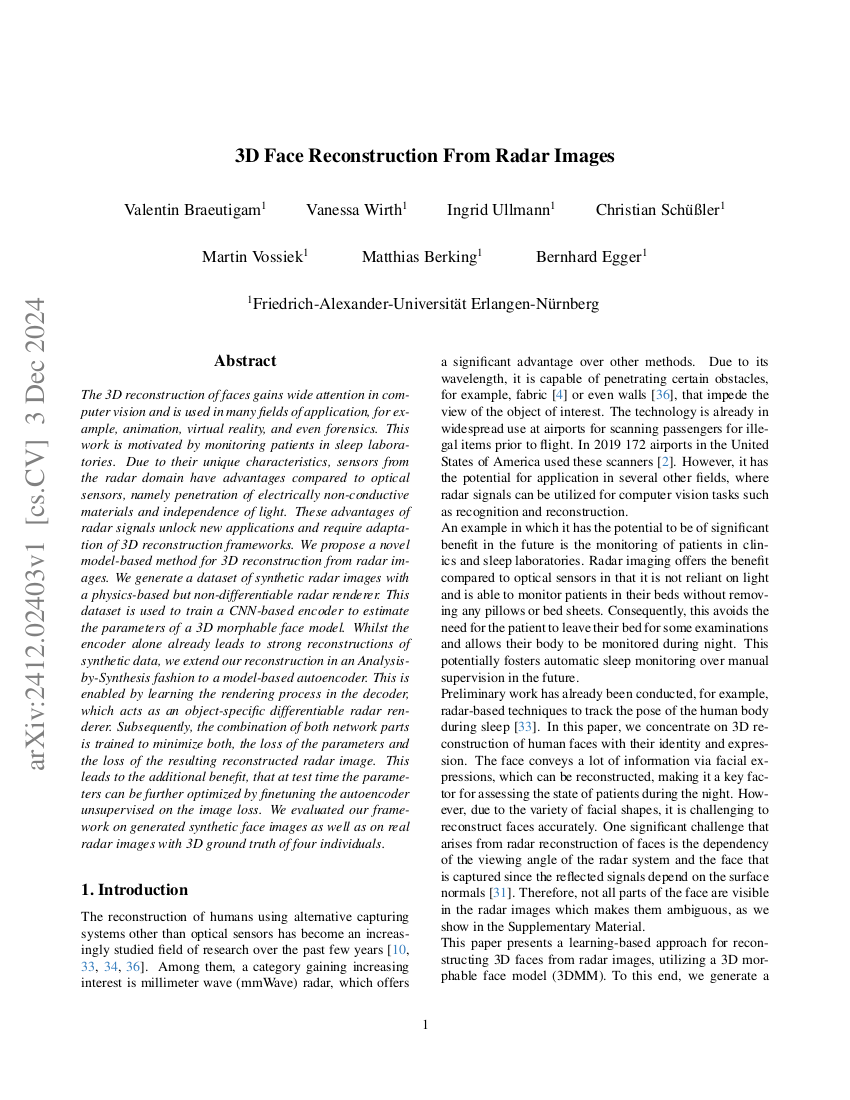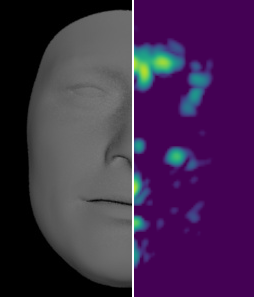3D Reconstruction of Faces From Radar Images
The input radar images while changing the Shape Model parameters of the ground truth meshes individually.

The resulting meshes from the autoencoder trained on amplitude and depth images evaluated on synthetic radar images. The Ground Truth (GT) are five meshes from the validation set generated from the Basel Face Model.
Abstract
The 3D reconstruction of faces gains wide attention in computer vision and is used in many fields of application, for example, animation, virtual reality, and even forensics.
This work is motivated by monitoring patients in sleep laboratories. Due to their unique characteristics, sensors from the radar domain have advantages compared to optical sensors, namely penetration of electrically non-conductive materials and independence of light.
These advantages of radar signals unlock new applications and require adaptation of 3D reconstruction frameworks. We propose a novel model-based method for 3D reconstruction from radar images.
We generate a dataset of synthetic radar images with a physics-based but non-differentiable radar renderer. This dataset is used to train a CNN-based encoder to estimate the parameters of a 3D morphable face model.
Whilst the encoder alone already leads to strong reconstructions of synthetic data, we extend our reconstruction in an Analysis-by-Synthesis fashion to a model-based autoencoder. This is enabled by learning the rendering process in the decoder, which acts as an object-specific differentiable radar renderer.
Subsequently, the combination of both network parts is trained to minimize both, the loss of the parameters and the loss of the resulting reconstructed radar image. This leads to the additional benefit, that at test time the parameters can be further optimized by finetuning the autoencoder unsupervised on the image loss.
We evaluated our framework on generated synthetic face images as well as on real radar images with 3D ground truth of four individuals.
BibTeX
@InProceedings{Braeutigam_2025_CVPR,
author = {Braeutigam, Valentin and Wirth, Vanessa and Ullmann, Ingrid and Sch\"u{\ss}ler, Christian and Vossiek, Martin and Berking, Matthias and Egger, Bernhard},
title = {3D Face Reconstruction From Radar Images},
booktitle = {Proceedings of the IEEE/CVF Conference on Computer Vision and Pattern Recognition (CVPR) Workshops},
month = {June},
year = {2025},
pages = {4431-4440}
}
Acknowledgements
This work was supported in part by Deutsche Forschungsgemeinschaft (DFG, German Research Foundation) – SFB1483 – Project-ID 442419336, EmpkinS.
The authors would like to thank the Rohde & Schwarz GmbH & Co. KG (Munich, Germany) for providing the radar imaging devices and technical support that made this study possible.


